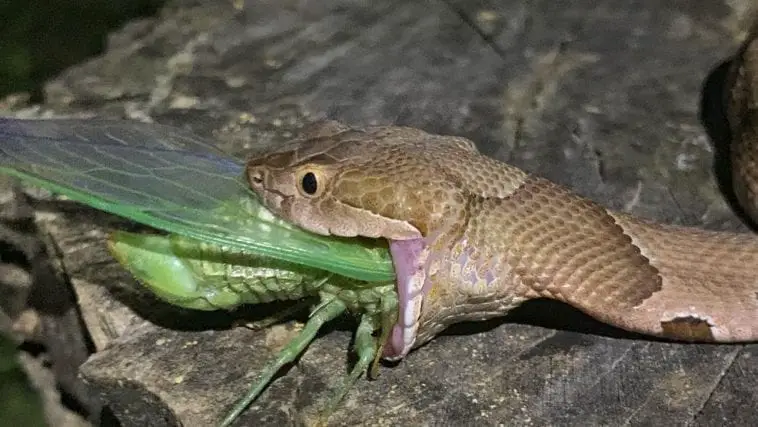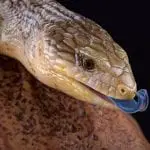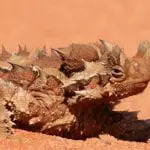Introduction
Snakes belong to the suborder Serpentes. These reptiles are legless, elongated, and carnivorous. Similar to squamates, they are amniotes, ectothermic vertebrates that are covered in scales that overlap. Most snake species possess skulls having more joints than their lizard ancestors.
Here are the good-to-know facts about snakes:
Through these joints, they can swallow large prey. Their organs like kidneys are in front of the other and not side by side; plus, they have just one lung. Some snake species have a pelvic girdle having a pair of vestigial claws on the cloaca’s side.
Snakes are found in most parts of the world. They are in the desert, swamps, forests, and grasslands. However, they cannot live in the coldest parts for the reason that they are cold-blooded or ectothermic as they say. They don’t have the ability to regulate the temperature of their bodies. Once it gets cold, the snake feels cold too.
The energy in their bodies cannot use energy for creating heat that will warm them. As a result, they hibernate in the winter or cold season. They hide in tunnels or underground or go inside people’s homes.
Diet of Snakes

Again, in the wild, snakes are mostly carnivores. However, their diet is influenced by their species. Some snakes eat insects, eggs, fish, slugs, earthworms, amphibians, and more. Apart from being just pets, they aid in pest control, too by eating rodents. Most people think that before a snake eats its prey, it has to bite it first then inject with poison. A few snake species use their venom in hunting. Since snakes have no for cutting and grinding their food, they just simply the prey whole. Large snakes strangle their prey until it dies, then swallowed after. As a matter of fact, snakes can eat bigger prey than them like cows or crocodiles. That is done by unhinging the prey with the snake’s jaw.
When the food gets inside, the snake produces enzymes that will break down the food. It is converted to energy. After eating, they don’t need to eat often as their metabolism is very slow. Digestion will take a long time. King cobra can survive for a month without food after having eaten its prey.
In captivity, snakes must be fed with diet having complete nutrients to avoid diseases related to food diet. Giving mice or rats is a balanced and complete diet. if you feed with dead and frozen food, you should thaw the food first. Don’t give live prey. Why? It is because the live prey can bite the snake, causing some injuries and infection that can threaten the snake’s life. You should train your snake to eat dead prey. It is safer and more human. You can buy dead prey from the pet store.
Facts About Feeding Snakes
1. Frequency of Feeding
For this matter, it depends on the snake’s activity level, size, and age. The young or small ones can eat two times a week, and the big ones would be once a week or once every two weeks. The breeding snakes should be fed more frequently.
2. Why Snakes Don’t Eat?
There are a lot of reasons for this. This includes stress from a disrupted or new environment, hibernation, pregnancy, shedding, no privacy, noise, improper temperature, and more. other serious causes are kidney failure, cancer, parasites, and other health problems. It is best to bring your snake to the vet for proper diagnosis and treatment.
3. Water
For their water needs, there should be a large bowl made of ceramic. Fill it with clean and fresh water always. For humidity, put a dish of water. This will be helpful in the snake’s shedding. Some snakes love soaking in water, so the dish should be wide and large. Change the water as often as possible and wash the bowl or dish too.
4. Eating Habit
The feeding depends on the location and the snake’s size. Some snakes inject their venom, then suck up all the liquid in the prey’s body. Some swallow their prey alive. Others make use of infrared ability to detect body heat. Not all snakes can see well. They use their tongue for movement picking, smelling, tasting, and identifying vibrations. Their jaws move far apart. They have hinges in their mouths. They enjoy very large prey. They could eat other types of snakes. They either ambush or wait for prey. After eating a large meal, they stay dormant.
The Insect and Invertebrate Eating Snakes
Some snakes just eat insects, spiders, snails, silkworms, and more. these snakes are good for owners who don’t like handling mice or rodents. In addition, these types of snakes are small; the inoffensive end can adapt to the naturalistic type of terrarium.
Some of these insect-eating snakes are brown snakes, ring-necked snakes, snail-eating snakes, worm snakes, flower pot snakes, pinewood snakes, and red-bellied snakes. Again, their natural diet will be slugs, earthworms, termites, grasshoppers, and so much more.
The Benefits of Silkworms

For snakes who are insect lovers, the silkworm is accordingly the healthiest for your pet as it is high in calcium, magnesium, vitamins, iron, and protein. However, you need to remember also that your pet should have a variety of diets to avoid nutritional deficiencies. A balanced diet will make them stronger and healthier.
To make them happy, feed them with a healthy and nutritious balanced diet. Silkworms are on the list. With that, don’t give your snake the following: wild maggots, fireflies, bees, butterflies, centipedes, houseflies, and more. They have parasites.
Here are some good-to-know facts about snake worms:
- Mealworms are poor feeders as it has low nutritional value, but they are juicy.
- Waxworms are loaded with fats. Give it moderation. You can take the fat off.
- Trevor Worms are high in calcium but high in fat too.
- Silk Worms are the most nutritious and healthiest. You can grow them easily.
Why Silkworms?
They are the most nutritious, convenient, and economical. They are a source of Vitamins B1, B2, and B3, Sodium, Magnesium, Iron, Protein, and Calcium.
- They taste and look better.
- They don’t jump, hide, or escape. They move slowly and easy to catch.
- They are easily swallowed and digested.
- They don’t harm or injure your snake.
- They grow ten times than crickets.
- They have no odor or annoying sounds.
- They live longer.
- They don’t require any water or special containers.
Is Feeding Snakes with Only One Type of Insect Necessary?
The answer is no. Here is the reason. Although insects are healthy food for snakes, certain snakes that are fed on a monotonous diet are also vulnerable to nutritional deficiencies. Therefore, the owner must find methods to ‘supplement’ the prey items before they are given to the snake. One method entails injecting the prey items with vitamin and/or mineral. Another method is implanting a gelatin capsule with any of the following; powdered vitamin, mineral, amino acid supplement into the prey. The more variety in the snake’s diet, the better the chance it will not have any nutritional deficiency or imbalance.
Important Tips to Remember When Feeding Snakes
1. Remember that snakes’ diet has to vary in order to meet all the nutritional needs and avoid the existence of nutritionally related diseases. Therefore, an owner should do research before he buys one.
2. Snakes in captivity should be given frozen and thawed prey. Warm it before feeding your snake. In contrast, some snakes don’t like pre-killed food, that is why you should be sure has to be in a pre-killed type of diet before you take it home.
3. The young snakes eating baby mice might want a live prey. A big disadvantage of giving live prey is the danger it gives your snake. It can bite and fight back. Although the snake wins, it gets pain too.
4. As mentioned earlier, either a snake is pure carnivorous or insectivore; still, it should be given a variety of food and not a monotonous type of diet. A single type of meal tends to give less or too much nutrition to the snake. Everything must be in moderation.
5. Protect your snake’s health. Knowing which and what type of diet is necessary. Avoiding the risky ones should be done too. Do not put your snake’s health at risk. Therefore, being knowledgeable about their diet should be basic information an owner must-have. A well-fed snake is a happy and healthy snake.
Conclusion
Feeding snakes should be diverse. Make sure to let them eat a wide array of insects and nutritious food to make them healthier and ensure that they will reach their lifespan without so much time being sick. Don’t allow your snakes to eat any food you’re not knowledgeable about. Just give them what they should be eating based on the recommendation of the veterinarian and your careful research.



